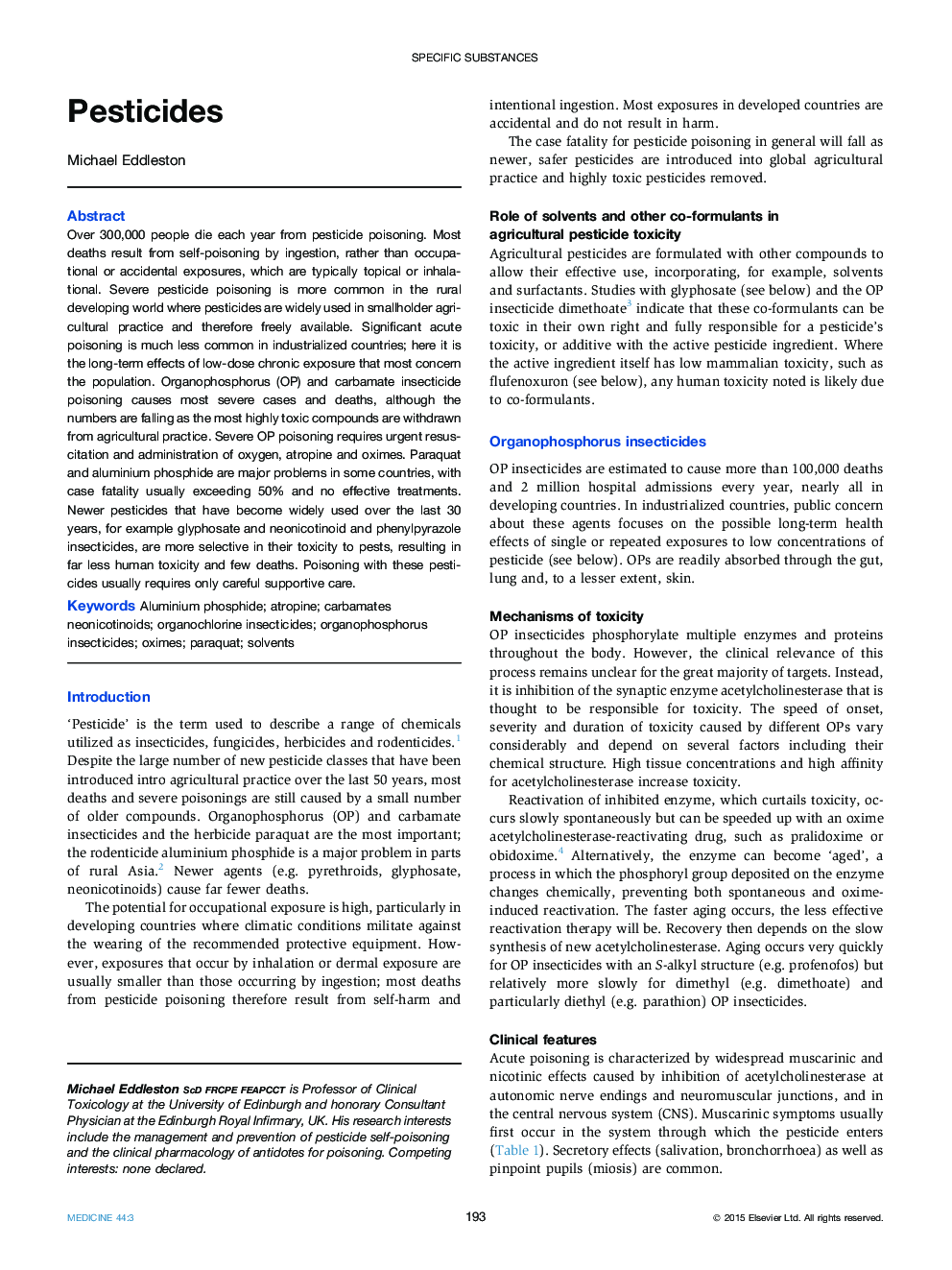| Article ID | Journal | Published Year | Pages | File Type |
|---|---|---|---|---|
| 3806650 | Medicine | 2016 | 4 Pages |
Over 300,000 people die each year from pesticide poisoning. Most deaths result from self-poisoning by ingestion, rather than occupational or accidental exposures, which are typically topical or inhalational. Severe pesticide poisoning is more common in the rural developing world where pesticides are widely used in smallholder agricultural practice and therefore freely available. Significant acute poisoning is much less common in industrialized countries; here it is the long-term effects of low-dose chronic exposure that most concern the population. Organophosphorus (OP) and carbamate insecticide poisoning causes most severe cases and deaths, although the numbers are falling as the most highly toxic compounds are withdrawn from agricultural practice. Severe OP poisoning requires urgent resuscitation and administration of oxygen, atropine and oximes. Paraquat and aluminium phosphide are major problems in some countries, with case fatality usually exceeding 50% and no effective treatments. Newer pesticides that have become widely used over the last 30 years, for example glyphosate and neonicotinoid and phenylpyrazole insecticides, are more selective in their toxicity to pests, resulting in far less human toxicity and few deaths. Poisoning with these pesticides usually requires only careful supportive care.
